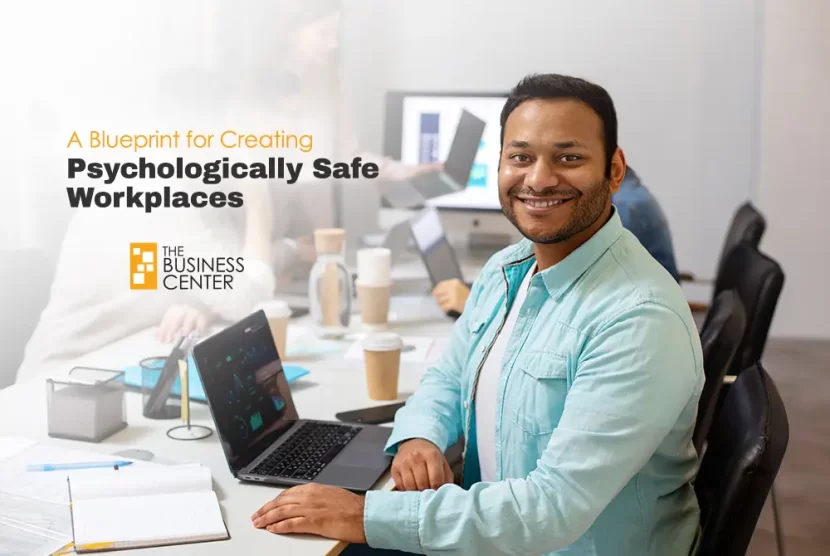In today’s fast-paced and competitive business landscape, organizations are increasingly recognizing the importance of creating a psychologically safe workplace for their employees. Psychological safety refers to an environment where employees feel comfortable taking risks, sharing their ideas, and expressing their thoughts and feelings without fear of retribution or ridicule. When employees feel psychologically safe, they are more engaged, creative, and productive, ultimately contributing to the success of the organization. Therefore, companies should deploy proactive tactics to ensure that their respective workplaces are safe and foster healthy work environments.

Signs of a Toxic Workplace
Many companies often ignore or brush away the signs of a toxic workplace. Simply put, these signs are not taken seriously. For example, high turnover is an important sign that employees are unhappy with the work environment and prefer to leave than to stay. Poor leadership is another sign that is often ignored. Employees who fail to align to the ways and vision of the top management prefer to leave than to work under ideologies that do not make them happy. So how can leaders avoid psychologically unsafe workplaces?

- Encourage Open Communication
One of the foundational principles of psychological safety is open communication. Employees should feel encouraged to speak up, ask questions, and share their concerns without fear of negative consequences. To foster this kind of candor, leaders must lead by example. They should actively listen to their employees, show empathy, and value their input. Regular team meetings, feedback sessions, and suggestion boxes can also provide employees with various avenues to express themselves.
- Embrace Constructive Opinions
Each individual in a group does not have to agree. Rather, diverse opinions are collectively known as a consensus. Feedback is essential for growth and development, but it must be delivered constructively. Employees should receive feedback that focuses on their performance rather than personal attributes. Encourage managers to provide feedback in a supportive manner, emphasizing areas for improvement while also recognizing accomplishments. Creating a feedback-rich culture helps employees feel that their contributions are valued, leading to increased engagement. When a group fully agrees out of fear, it is called groupthink. When groupthink occurs, employees are forced to choose sides, either leaning towards their bosses or the group. Groupthink can lead to disastrous outcomes because it leaves employees making unethical decisions and a select few people end up leading the direction of the team.
How can a leader see the signs of groupthink? If you are a boss, you will notice apathy and complacency among your team. When you ask their opinions they will offer diplomatic answers or remain silent because they already know that diverse opinions are actively shut down. According to a study by McChrystal Group, only 37% of leaders encourage their teammates to offer different views.Therefore, more work needs to be done to ensure that employees voice their opinions without fearing repercussions for a truly safe workplace.

- Cultivate Inclusivity and Diversity
To create a psychologically safe workplace, organizations must actively promote inclusivity and diversity. This includes recruiting and retaining employees from diverse backgrounds, providing equal opportunities for growth and advancement, and ensuring that everyone feels respected and valued.
- Promote Work-Life Balance
Balancing work and personal life is essential for overall well-being. Employers should support employees in managing their workloads and maintaining a healthy work-life balance. Flexible work space arrangements, paid time off, and mental health programs can help employees feel more supported in managing their responsibilities both at work and at home.
- Encourage Risk-Taking
A psychologically safe workplace encourages employees to take calculated risks without the fear of failure. When employees feel safe to experiment and try new things, they are more likely to innovate and develop new solutions. Therefore, employee mistakes should be seen as stepping stones towards greater performance. Leaders can foster this environment by acknowledging that mistakes are a part of the learning process and that they won’t lead to punitive actions if made in good faith.
In a typical fear-based environment, one would be very afraid to make mistakes. Leaders often fail to recognize that mistakes and uncomfortable conversations are needed for team members to progress further. Out of fear of making a mistake, many employees can choose questionable actions or become unpredictable. Expecting perfection from a team can discourage risk-taking and harbor micromanagement. It is already established that micromanagement is detrimental to the psychological safety of a work team because it prevents employees from taking individual responsibilities. They hold back until their boss tells them what to do next. Under these circumstances, some employees can even mask their underperformance in ‘unusual’ ways. As a leader, it is best if you remain available but do not impose, so that employees take risks and after making mistakes they can seek assistance when they are ready to receive it.

- Establish Clear Expectations
Employees need to have a clear understanding of their roles, responsibilities, and performance expectations. Ambiguity can lead to stress and anxiety. Managers should set clear objectives, provide guidelines, and regularly check in with employees to ensure they have the resources and support needed to meet their goals. Understand the negative consequences of unclear performance expectations in a workplace.Repeatedly changing project directions can lead to demotivation, a loss of confidence in both team members and management, and a reluctance to take initiative. To avoid these issues, we recommend creating psychological safety by clearly defining expectations from the outset, even if there may be some flexibility in project scope. Clear expectations are seen as a way to encourage confidence and higher effort from the team.
- Support Mental Health
Mental health is a critical aspect of overall well-being, and it deserves attention in the workplace. Organizations should offer resources, such as employee assistance programs and mental health awareness training, to support employees’ emotional and mental health needs. Creating a stigma-free environment where employees feel comfortable discussing mental health issues can go a long way in promoting psychological safety. It is important to design specifically places where employees can collaborate and relax, have a cup of coffee, or eat snacks, or just hangout with their colleagues.

- Lead with Empathy
Empathy is a cornerstone of a psychologically safe workplace. Leaders should take the time to understand their employees’ perspectives, challenges, and concerns. Showing empathy and compassion can build trust and strengthen relationships within the organization. When employees feel that their leaders genuinely care about their well-being, they are more likely to feel psychologically safe.
- Address Conflict Promptly
Conflict is inevitable in any workplace, but it should be addressed promptly and constructively. Leaders should encourage open and respectful conflict resolution processes. Providing training in conflict management and mediation can help employees and teams resolve issues in a healthy way, preventing conflicts from escalating and negatively impacting psychological safety.
A psychologically safe workplace is not just a nice-to-have; it’s a necessity for modern organizations. When employees feel safe to voice their opinions, take risks, and be themselves, they become more engaged, innovative, and committed to their work. By fostering open communication, embracing diversity, promoting work-life balance, and supporting mental health, organizations can create an environment where employees thrive and contribute their best. Maintaining a healthy workplace is an ongoing process. Organizations should regularly assess their efforts to gauge the level of psychological safety within the workplace. Key performance indicators and certain initiatives can help measure progress and identify areas that need improvement.



